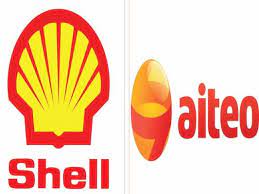iteo Exploration and Production Company on Friday, alleged that the 16 million crude shortfall recorded at the Bonny Export Terminal between 2016 and 2018 is owned by them and the Federal Government.
Mr Ndiana Matthew, Group Head, Media Operations at Aiteo in a statement, noted that Aiteo was being victimised for raising the alarm over the missing crude.
He alleged that Shell Petroleum Development Company of Nigeria (SPDC) operator of the Bonny Crude Export Terminal, was behind ongoing media reports to tarnish its image and that of Aiteo’s founder to divert attention.
“By doing so, the outcome will create unnecessary digressions and distractions from the current issues encapsulated by our demand that Shell accounts and pays for over 16 million barrels of oil belonging to us and the Nigerian government.
“The crude is missing through their actions and activities. Hitherto unchallenged evidence of this missing crude is exemplified by the discrepancies in the production figures independently reported by the Nigerian National Petroleum Corporation (NNPC) and the Department of Petroleum Resources (DPR).
“As is standard in the industry, DPR reports actually reconciled production volumes from the wells that flow to the terminal.
“Their records and statistics align with Aiteo’s reconciled production figures. NNPC, on the other hand, reports crude measured at the tanks in the terminal exclusively managed, operated and controlled by the IOC.
“It is the analysis of these independent reports that demonstrates the glaring discrepancies. Indeed, over the relevant three-year period, the figures from both government agencies.
“In 2016, NNPC reported 16 million barrels while DPR records showed 22 million, while in 2017, NNPC data showed 13.5 million barrels whereas DPR recorded 21 million barrels and in 2018, NNPC recorded 15 million and DPR 25 million barrels,” Aiteo stated.
It was learnt that the crude deficit between 2016 and 2018 reported at the Bonny terminal operated by SPDC had caused a dispute amongst several oil firms that used the oil export facility.
However, SPDC said allegations of involvement in oil theft at its Bonny Crude Export Terminal was misleading.
In a statement made available to newsmen, Mr Bamidele Odugbesan, Media Relations Manager at SPDC described the claim as factually incorrect.
“The crude theft and diversion allegation is also factually incorrect.
“This is a distinct issue that relates to the directive by the DPR to SPDC as operator of the Bonny Oil and Gas Terminal, an asset belonging to the SPDC Joint Venture to implement a crude reallocation programme between injectors into the SPDC JV’s Trans Niger Pipeline and injectors into the NCTL.
“Crude allocation review and reallocation is a normal industry practice to reallocate previous provisional allocated volumes under the directive and supervision of DPR and this is not an exercise resulting from crude diversion, underreporting or theft at the terminal.
“This industry practice is not peculiar to the SPDC-operated Bonny Oil and Gas Terminal alone and does not translate into any loss of volumes to the Federal Government of Nigeria.
“The reallocation issue was initiated by SPDC as operator of the Bonny Oil and Gas Terminal, while the DPR validated and confirmed it for implementation for the concerned oil producers.
“Crude oil production metering and allocation are subject to specific guidelines issued by the industry regulator, DPR, SPDC strictly adheres to these guidelines and the implementation is regularly verified by the regulator,” Odugbesan stated.
SPDC, Belema Oil Ltd, Eroton E & P, Niger Delta Petroleum Resources, Total E & P and Walter Smith Petroleum Ltd used the NCTL to convey crude to the Bonny terminal and were proportionately affected by the deficit.
Aiteo, an indigenous oil firm, acquired OML 29 for 2.4 billion dollars following SPDC’s 2015 divestment of its 45 per cent stake from the asset.
OML 29 included the 97-kilometre NCTL which has the capacity to lift up to 180,000 barrels per day of crude from oilfields in Bayelsa and Rivers to the Bonny terminal.






